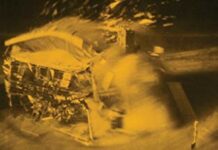
Ebook Info
- Published: 2016
- Number of pages: 288 pages
- Format: PDF
- File Size: 2.72 MB
- Authors: Paul Halpern
Description
A fascinating and thought-provoking story, one that sheds light on the origins of . . . the current challenging situation in physics. — Wall Street Journal When the fuzzy indeterminacy of quantum mechanics overthrew the orderly world of Isaac Newton, Albert Einstein and Erwin Schröger were at the forefront of the revolution. Neither man was ever satisfied with the standard interpretation of quantum mechanics, however, and both rebelled against what they considered the most preposterous aspect of quantum mechanics: its randomness. Einstein famously quipped that God does not play dice with the universe, and Schröger constructed his famous fable of a cat that was neither alive nor dead not to explain quantum mechanics but to highlight the apparent absurdity of a theory gone wrong. But these two giants did more than just criticize: they fought back, seeking a Theory of Everything that would make the universe seem sensible again. In Einstein’s Dice and Schröger’s Cat, physicist Paul Halpern tells the little-known story of how Einstein and Schröger searched, first as collaborators and then as competitors, for a theory that transcended quantum weirdness. This story of their quest-which ultimately failed-provides readers with new insights into the history of physics and the lives and work of two scientists whose obsessions drove its progress. Today, much of modern physics remains focused on the search for a Theory of Everything. As Halpern explains, the recent discovery of the Higgs Boson makes the Standard Model-the closest thing we have to a unified theory- nearly complete. And while Einstein and Schröger failed in their attempt to explain everything in the cosmos through pure geometry, the development of string theory has, in its own quantum way, brought this idea back into vogue. As in so many things, even when they were wrong, Einstein and Schröger couldn’t help but get a great deal right.
User’s Reviews
Editorial Reviews: Review A New Scientist Best Read of 2015″Entertaining and evocative.”―New Scientist”[Told] with humor and concision.”―Nature”This book can be put on the reading list of those who have enjoyed The Theory of Everything and want to know more.”―Physics World”A highly approachable book that will appeal to readers…who are interested in physics, the history of science, and the human and political aspects of scientists and their work.”―Library Journal”That’s a lot to cover in a single book, and the author masters this challenge most thoroughly.”―MAA Reviews”As a fan of popular science books and someone who has used phrases such as ‘God does not play dice’ and ‘Schrodinger’s Cat’ in my songs, I found Paul Halpern’s book illuminating and entertaining.”―Roland Orzabal, co-founding member of Tears for Fears About the Author Paul Halpern is a professor of physics at the University of the Sciences in Philadelphia, and the author of sixteen popular science books, including The Quantum Labyrinth. He is also a Fellow of the American Physical Society. He lives near Philadelphia, Pennsylvania.
Reviews from Amazon users which were colected at the time this book was published on the website:
⭐Four stars awarded with some reluctance. The author has bitten off more than he can chew. The central theme is that two of the highest achievers in physics, close contemporaries and long-term friends, each became dissatisfied with the standard orthodoxy late in life and each tried to produce a grand unified theory. Each was unsuccessful and the process strained the friendship.My first problem is that the author attempts to give the lay reader a background in both quantum mechanics and relativity to provide some context. Admirable intention, but he stretches over far too much physics in far too little space. It’s 17 years since I got my physics degree and I found this a useful reminder, but there is too much information for the lay reader.My second problem is that the author tries to build in excessive biographical information. Both protagonists led unconventional love lives, but this is irrelevant to their late-in-life attempts to unify physics. Nevertheless, the author detours from the main thesis with plentiful information.Each of them fell into conflict with the Third Reich. Einstein dealt with this speedily and simply: he got out and stayed out. Schrödinger had a significantly more complicated relationship and, again, irrelevant information is provided. Schrödinger found employment at a new Irish institute, and – guess what – we are given irrelevant information about the Irish political situation throughout the first half of the 20th century.Perhaps I’m being too harsh on the author. He writes well and I was never tempted to give up on the book. I have no doubt that he could write (i) splendid popular science books on both quantum mechanics and relativity (ii) gripping biographies of both Einstein and Schrödinger and (iii) an authoritative history of physics under the Third Reich. But in trying to cover all of this in a single book, he has spread himself too thinly. I wish he’d devoted more space to the central theme and desisted from wandering, however engagingly, off the track.
⭐Physicist Paul Halpern has written and interesting and difficult book about the lives and theories of two of the greatest physicists of the 20th century. His discussion about the lives and philosophies of Einstein and Schrodinger is fascinating. This is especially true when he discusses Einstein’s deity in the context of Baruch Spinoza which leads him to believe that science is deterministic and not probabilistic. Hence Einstein’s aphorism that God does not play dice with the universe. He also goes into great detail about Schrodinger’s very active sex life with more than a few women all the while being married. He spends more time on this than Schrodinger’s famous cat that is half dead and half alive.At least for me, where he makes it difficult for the lay reader is his discussion of the science of Einstein and Schrodinger. Before reading this book I would suggest that the lay reader become very acquainted with the equivalent of “quantum mechanics for dummies,” “relativity for dummies,” and “unified field theory” for dummies.” Alas with only one course of college level physics there were many parts of this book where I was lost. The book needs clearer examples of the theories and diagrams would be of great help.Finally his title is somewhat of a misnomer. Neither Einstein nor Schrodinger, try as they might, never arrived at a unified theory of physics. Even today’s standard model which Halpern acknowledges does not account for the role of gravity while accounting for electromagnetism and weak and strong forces of nuclear interaction. With that last sentence I am way over my head.
⭐Paul Halpern has written an excellent comparative biography of Einstein and Schrodinger and their journey towards a unified field theory. Halpern’s writing style is quite engaging and he is able to explain sophisticated concepts in a clear and understandable manner.As a professional general relativity theorist, I was familiar with Einstein’s attempts at a unified field theory as a means not only to unify gravity and electromagnetism but also as a means to try to derive quantum mechanics from a deterministic theory. I was not familiar with Schrodinger’s attempts at a unified field theory. It was interesting to find that Schrodinger wanted to unify gravity, electromagnetism, and mesons thereby trying to taking into account what was beginning to be understood in particle physics.The story of the human side of the interaction of Einstein and Schrodinger is also very well done by Halpern and makes for fascinating reading. The story that Halpern tells is also a cautionary tale of the hubris that can occasionally overcome even the greatest scientific minds.Halpern also includes a chapter at the end that brings you up to date with the current attempts at the unification of gravity, electromagnetism, the strong and weak forces.Einstein’s Dice and Schrodinger’s Cat is a book that would be enjoyed by both the scientific community and the general science leaning public.
⭐Body awful book, almost unreadable. I must have been reading a different book to the rest of the reviewers. No facts but lots of speculation, tabloid tripe masquerading as scientific and biographical fact. I have never disliked a book as much as this it rubbish.
⭐I ordered these three books from the reseller London Bridge Books as used books. The prices were very good so I was very pleased to find that the books were in very good condition. Two of the books had some very minor wear or a few pages with folded edges, more than expected for used books. The third book could almost pass for new, or at the very least as an old unused copy. It is more than certain that I will be purchasing again in the future from London Bridge Books. I should note that both price and quality are critical factors for me. Easily I highly recommend them.
⭐Not an easy read, but very interesting
⭐The author discusses the development of general relativity and quantum mechanics with detail biographical details of its authors. A good and enjoyable read in history of physics.
⭐A good fascinating read that fills in a lot of background. The physics is not difficult and the history is very well presented. Recommended for anyone with an interest in physics but does not require the mathematical detail.
Keywords
Free Download Einstein’s Dice and Schrödinger’s Cat: How Two Great Minds Battled Quantum Randomness to Create a Unified Theory of Physics in PDF format
Einstein’s Dice and Schrödinger’s Cat: How Two Great Minds Battled Quantum Randomness to Create a Unified Theory of Physics PDF Free Download
Download Einstein’s Dice and Schrödinger’s Cat: How Two Great Minds Battled Quantum Randomness to Create a Unified Theory of Physics 2016 PDF Free
Einstein’s Dice and Schrödinger’s Cat: How Two Great Minds Battled Quantum Randomness to Create a Unified Theory of Physics 2016 PDF Free Download
Download Einstein’s Dice and Schrödinger’s Cat: How Two Great Minds Battled Quantum Randomness to Create a Unified Theory of Physics PDF
Free Download Ebook Einstein’s Dice and Schrödinger’s Cat: How Two Great Minds Battled Quantum Randomness to Create a Unified Theory of Physics



